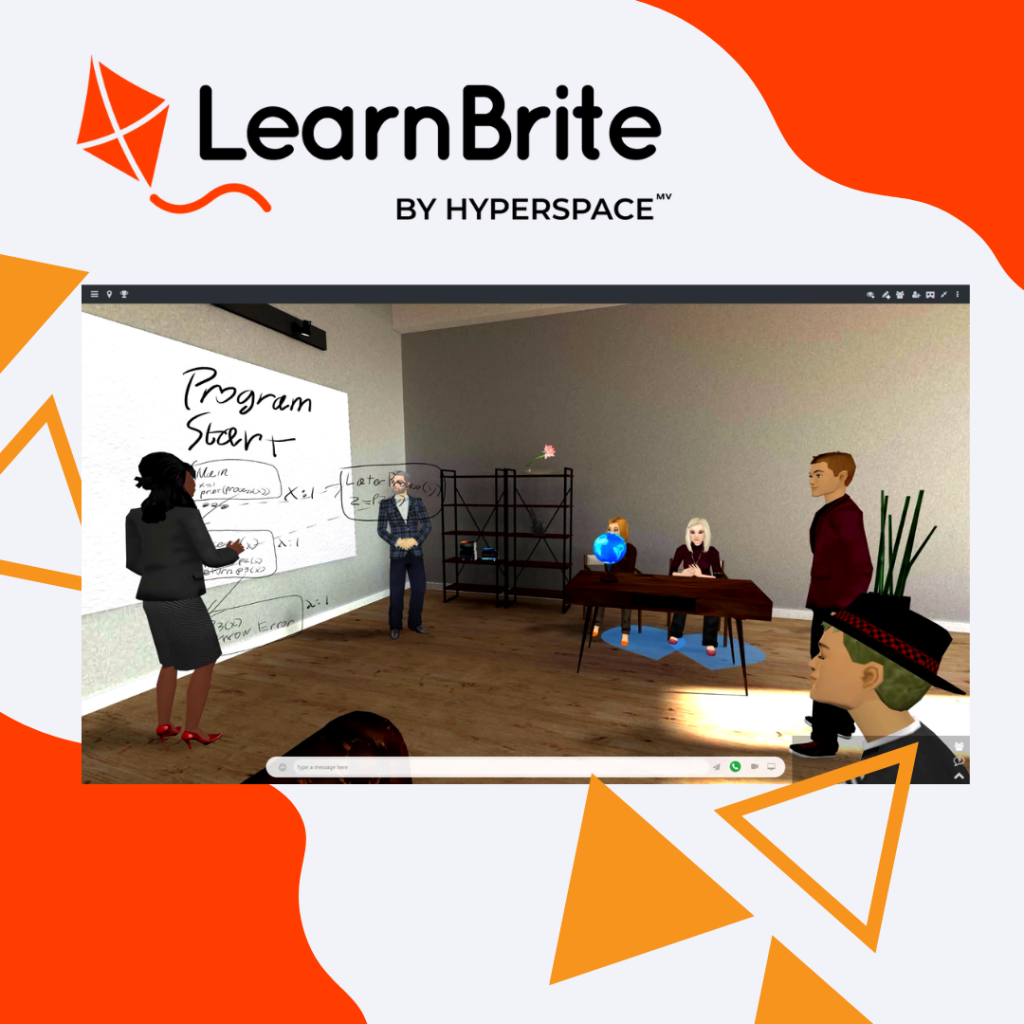Instructional design training courses are essential for professionals seeking to enhance their skills in creating effective and engaging learning experiences. These classes offer an exhaustive comprehension of the instructional design process, allowing students to create quality online learning materials for platforms such as LMSs, universities and e-learning companies.
In this blog post, we will delve into the world of instructional design training courses by discussing what they entail and their benefits. For those looking to upskill and advance their career, this post will guide which instructional design courses best suit your goals.
Furthermore, we will highlight the key skills you can expect to acquire from an instructional design course and where you can find quality programs offered by reputable institutions. By the end of this post, you’ll better understand how investing in an instructional design training course can elevate your expertise in visual design, UX design, and other aspects crucial for developing exceptional online learning experiences.
Table of Contents:
- Popular Online Instructional Design Courses
- ID Bootcamp
- Harvard’s Introduction to Instructional Design Course
- Mastering Design Thinking
- Practical Application and Real-world Projects
- Flexibility and Convenience of Online Learning
- Frequently Asked Questions Instructional Design Training Courses
- Conclusion
Popular Online Instructional Design Courses
In recent years, the demand for skilled instructional designers has grown exponentially. As a result, numerous online instructional design courses have emerged to equip learners with the necessary skills to create effective educational materials. These courses offer comprehensive coverage of various aspects of instructional design, including the instructional design process, online learning strategies, and visual and UX design principles.
ID Bootcamp
ID Bootcamp is an intensive course designed for beginners and experienced professionals looking to enhance their knowledge of instructional design. The program covers essential topics such as needs analysis, learning objectives creation, content development strategies, assessment techniques and tools like Articulate Storyline 360.
Harvard’s Introduction to Instructional Design Course
This Introduction to Instructional Design Course from Harvard University Extension School provides students with a solid foundation in designing instruction for higher education settings. Topics covered include cognitive psychology principles applied to teaching & learning, multimedia production essentials, accessibility considerations, etcetera, thereby making it an ideal choice irrespective of whether one seeks beginner-level knowledge upgrade/refresher sessions targeted primarily towards experienced practitioners seeking advanced skillset enhancement opportunities alike.
Mastering Design Thinking
The MIT Sloan Executive Education Program offers an immersive course called “Mastering Design Thinking.” This program focuses on applying design thinking principles to create engaging learning experiences. Participants will learn how to identify user needs, develop prototypes, and iterate their designs based on feedback from real-world projects.
These popular online instructional design courses provide a flexible and convenient way for professionals in learning and development to acquire new skills or enhance existing ones. With comprehensive coverage of critical elements in instructional design, these programs cater to beginners and experienced practitioners alike.

Online instructional design courses provide the foundational knowledge and skills to create effective learning experiences. With practical applications and real-world projects, you can further develop your abilities in creating accessible, mobile-friendly designs that engage learners with gamification techniques and audio production/editing essentials.
Key Takeaway:
A no-code platform is being developed to create 3D experiential learning scenarios for various training courses, such as instructional design. The platform will allow self-paced or instructor-led courses, micro-learning modules, gamified learning and more.
Practical Application and Real-world Projects
For instructional design professionals, hands-on experience with real-world projects is essential to build a strong portfolio and equipping them with the practical skills employers demand. Many instructional design training courses emphasize the need to gain experience with real-world projects, not only for creating a strong portfolio but also for obtaining sought-after skills for employers look for. As such, many instructional design training courses focus on providing learners with opportunities to work on actual projects, ensuring they gain valuable insights into the instructional design process.
Hands-on Experience with Articulate Storyline 360 and Rise
To create engaging online learning experiences, mastering popular e-learning tools like Articulate Storyline 360 and Rise is crucial. These platforms allow instructional designers to develop interactive content without any coding knowledge. Learners can hone their visual design and UX skills while creating effective educational materials by working on projects using these tools during their instructional design courses.
Accessibility, Mobile-friendly Design, and Gamification Techniques for Learner Engagement
- Accessibility: Ensuring that learning materials are accessible to all users regardless of disabilities or limitations is an important aspect of modern instructional design. Training programs often include modules focused on accessibility best practices so that designers can create inclusive learning experiences.
- Mobile-friendly Design: With more people accessing online content through mobile devices than ever, designing responsive e-learning solutions has become imperative. Instructional designer training courses cover strategies for optimizing content across various screen sizes and device types.
- Gamification Techniques: Incorporating game elements into educational materials can significantly boost learner engagement. Many instructional designers use instructional design classes to teach learners to effectively use gamification techniques, such as badges, leaderboards, and challenges in their projects.
Audio Production/Editing Essentials
In addition to visual design elements, audio plays a vital role in creating immersive learning experiences. Instructional designers must be proficient in producing and editing high-quality audio content for e-learning courses. Many instructional design courses near me offer modules that cover the essentials of audio production and editing software like Audacity or Adobe Audition so that learners can create engaging multimedia materials.
Participating in instructional design courses emphasizing putting concepts into practice and engaging with real-world assignments can help hone the skills needed to succeed as an instructional designer. By working hands-on with popular tools like Articulate Storyline 360 and Rise while mastering accessibility best practices, mobile-friendly designs, gamification techniques for learner engagement, and audio production/editing essentials – you’ll be well-equipped to create effective educational materials that meet the needs of diverse audiences.

By engaging in practical applications and real-world projects, learners understand how to apply the skills they learn during instructional design training courses. Moving on, we’ll explore the flexibility and convenience of online learning for all experience levels.
From immersive learning initiatives to always-on events, LearnBrite allows you to run evergreen experiences that delight attendees and generate sponsor leads on autopilot. Your Metaverse becomes a hub of engaging and interactive experiences that continue to captivate and inspire, providing continuous value and driving attendee engagement and sponsor opportunities without constant manual effort.
Key Takeaway:
A no-code platform is being developed to create immersive 3D experiential learning scenarios for various training courses, such as instructional design. The platform can be used for self-paced or instructor-led courses, micro-learning modules, employee onboarding, and gamified learning,s.
Flexibility and Convenience of Online Learning
Online instructional design training courses offer numerous benefits, making them an attractive option for beginners and experienced practitioners. One significant advantage is their flexibility, allowing participants to access course materials anytime and anywhere,e according to their convenience levels. This eliminates potential barriers or hindrances often encountered in traditional classroom-based learning environments.
Accessible Anytime/Anywhere According to Individual Convenience Levels
The online nature of these instructional design courses means learners can study at their own pace, fitting sessions around work commitments or personal schedules. Whether you prefer early morning study sessions before heading off to work or late-night lessons after putting the kids to bed, online learning accommodates your unique needs.
Ideal for Beginners and Experienced Practitioners Alike
No matter where you are in your instructional design journey – whether just starting or looking to enhance your existing skillset – there’s an online course tailored specifically for you. For example, ID Bootcamp offers a comprehensive introduction. At the same time,e more advanced options like Harvard’s Introduction to Instructional Design Course focus on specific aspects such as visual design principles or UX/UI best practices within higher education settings.
Comprehensive Coverage of Critical Elements in Instructional Design
- eLearning authoring tools: Learn how to use popular eLearning authoring tools such as Articulate Storyline 360 and Rise effectively by participating in hands-on exercises throughout the course.
- Learner engagement techniques: Discover how to create an engaging, interactive learning experience using gamification techniques and mobile-friendly design strategies.
- Online learning management systems: Understand various Learning Management System (LMS) platforms, their features, and best practices for implementation within your organization or educational institution.
In addition to these critical elements, online instructional design courses often provide opportunities for networking with fellow professionals in the field. This can lead to valuable connections that may help advance your career or even open doors to new job opportunities. It’s clear why so many instructional designers opt for online training programs to further their knowledge and remain competitive in this rapidly advancing field.
Key Takeaway:
A no-code platform is being developed to create immersive 3D learning scenarios for various training courses,s such as instructional design. The platform aims to provide self-paced or instructor-led courses, micro-learning modules, employee onboarding, and gamified learning experiences using role-play simulations.
Frequently Asked Questions Instructional Design Training Courses
What are the three major components of instructional design?
The three major components of instructional design are analysis, design, and evaluation. The analysis involves identifying learners’ needs, goals, and existing knowledge. The design includes creating a learning plan with objectives, content organization, and assessment strategies. Evaluation measures the effectiveness of the instruction to ensure it meets its intended outcomes.
How can I learn more about instructional design?
To learn more about instructional design, consider enrolling in online courses like LearnBrite, attending workshops or conferences, reading books and articles from industry experts or joining professional organizations such as ISPI or ATD.
What is the importance of instructional design training?
Instructional design training is important because it equips professionals with essential skills to create compelling learning experiences that meet learners’ needs while maximizing engagement and retention. It helps instructional designers and practitioners apply evidence-based practices for designing impactful educational materials across various formats (e.g., e-learning modules) using cutting-edge technologies.
What is instructional design training?
Instructional design training refers to programs that teach individuals how to develop engaging educational content based on established principles of adult learning theory. The training cover learner analysis techniques; developing clear objectives; selecting appropriate delivery methods; incorporating multimedia elements effectively; assessing learner performance.
Conclusion
With the right course, you can develop a comprehensive understanding of applying best practices in instructional design principles. You will also gain valuable skills such as developing storyboards, creating interactive activities, designing assessments,s and more that can help you create immersive 3D experiential scenarios for self-paced orinstructor-ledd courses. By taking advantage of quality online resources like no-code platforms with instructional designers and expert guidance from experienced instructors, anyone interested in improving their knowledge on this subject matter should consider enrolling in one today.
Make your Metaverse future-proof with LearnBrite’s browser-based platform, allowing seamless access across smartphones, tablets, laptops, and VR/AR headsets without downloading or installing software. Empower users to explore and experience your Metaverse effortlessly, ensuring maximum accessibility and convenience.
Discover the power of LearnBrite‘s no-code platform to quickly create immersive 3D learning experiences that will revolutionize your instructional design training courses. Unlock a new world of possibilities with our comprehensive suite of features and start transforming education today!


Recent Comments